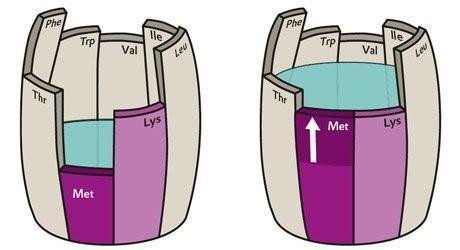Just as “fat-free” was the magic phrase to get someone to purchase your product in the 2000s, so “protein” has become its natural successor. Forget health food shops – stroll into any supermarket nowadays, from M&S to Lidl, and you’ll find packaging that practically screams about an item’s lofty ’tein credentials at every turn. Big, brash labels abound, like hyperactive paddles at an auction house: “20g!” “30g!” “50g!!!” “SOLD to the tiramisu on aisle nine!”
…
The latest data from marketing research firm Mintel indeed shows an uptick in 2024: high or added protein claims went from featuring on 5 per cent of UK food and non-alcoholic drinks launched in 2023 to 7 per cent last year.
“While this latest rise was partly fuelled by products like meat and poultry highlighting their intrinsic protein content, activity has also picked up in many categories not traditionally associated with high protein, such as desserts, yogurt, breakfast cereals, pasta, bread, and even cold coffee drinks,” says Kiti Soininen, Mintel’s category director of UK food and drink research. She namechecks brands like Grenade and Myprotein, whose mainstream growth has built “momentum” and brought high-protein, lower-sugar snacks like chocolate-style bars and drinks to a wider audience.
…
Knowledge of its benefits appears to have trickled down to the general populace. According to research commissioned by The Grocer in 2024, protein was the No 1 nutrient Brits were trying to consume more of, while Mintel’s data has found that the percentage of people who listed high protein content as one of their three most important factors in healthy foods jumped from 15 per cent in 2019 to 21 per cent in 2024. The latter number is much higher for young people too, leaping to 39 per cent for under-35s.
Protein’s climb up the popularity rankings has enabled a multibillion-dollar industry to shoot up around it. In the UK, the market enjoyed 24 per cent growth to reach £205m in the year to November 2023, and a further 15 per cent increase to £235m in the year to November 2024. Meanwhile, the global protein supplements market was worth $28bn (£22bn) last year, a figure that is predicted to increase to $30bn in 2025. Protein is big business, and every brand in town wants to milk the latest cash cow – Weetabix included.
But how much protein do most of us really need on a daily basis, and are we struggling to get it? The recommendation is that we eat around 0.75g of protein per kilo of body weight per day, equating to around 56g for an average man (11st 11lb) and 45g for an average woman (9st 6lb). Older adults aged 65 and over should consume a little more – around 1g per kg of bodyweight – as muscle loss increases and absorption slightly decreases as we age. For those specifically looking to build muscle by working out, the recommendation goes up to 1.2 to 2g per kg of bodyweight per day – the equivalent of 90 to 150g for the average male and 72 to 112g for the average female.
…
She gives an example of a day’s food to show how achievable it is to hit or exceed the recommended daily allowance (RDA) of protein: porridge with milk = 14g; tuna and sweetcorn sandwich = 26g; chicken breast with potatoes and veg = 35g; yoghurt pot = 5g; snack handful of nuts = 7g. This all adds up to 87g of protein – no supplements required.
In reality, despite the hype and the current abundance of high-protein products and supplements available, most of us are getting more than enough protein. Americans consume around twice the daily amount recommended in the federal dietary guidelines; in the UK, we are eating around a third more protein than we need, with men averaging about 85g and women 67g per day.
if you eat protein supplements (eg. shakes, bars, etc) and you don’t work out, you will get extra fat. the body will just burn or split it and store the surplus it in fat cells, almost like sugar.
She gives an example of a day’s food to show how achievable it is to hit or exceed the recommended daily allowance (RDA) of protein: porridge with milk = 14g; tuna and sweetcorn sandwich = 26g; chicken breast with potatoes and veg = 35g; yoghurt pot = 5g; snack handful of nuts = 7g. This all adds up to 87g of protein – no supplements required.
“You don’t need to eat more protein, if you eat these foods that are high in protein every day”
I don’t eat a big piece of meat every day, and I don’t eat 150g of yoghurt every day, either. I did do the math, I’m often eating less than the recommended amout of protein. Granted, I avoid these foods for ethical reasons, so most of these added-protein foods don’t really change anything for me since the added protein tends to be animal-derived (e.g. whey).
Yeah, even if you’re not restricting anything in your diet, it’s actually hard to get to the recommended protein intake. Not to mention, eating a steak every day is going to be bad for you in other ways.
Yeah that’s my take here as well. “If you strictly eat high protein ‘normal’ food, you’re almost hitting the recommended amount.” So you’d have to be crazy to look for food with high protein!
Theres so many inconsistencies and half truths in this article I cant be bothered doing a point by point.
If you want to know the science on protein check out Dr Mike Isratel, Dr Pak, Jeff Nippard or any of the other science based bodybuilders who make highly informative videos on the subject, often backed up with references to studies and meta-analysis of studies.
I generally eat vegetarian food at home, and do need to keep an eye on my protein quantities quite often - but even so, I do feel a little like the “cheeseburger pizza” with “PROTEIN!” written all over it in the “health food” section was stretching definitions a little bit :)
In addition to all of this, not all protein is the same. You need bioavailable protein. The protein needs to have all of the essential amino acids in the right ratio to be useful.
You could eat 500 g of incomplete protein, and still not meet your protein requirements.

The protein label on food, is crude protein, which means it’s a guess based on nitrogen content of the food. Not actually measured Amino acids.
DIAAS is the gold standard to determine protein quality and food. https://en.wikipedia.org/wiki/Digestible_Indispensable_Amino_Acid_Score
If you want to look up the Diaas score of food you may be already eating, check out https://www.diaas-calculator.com/
TLDR: protein needs to come from real sources, it can’t be added to processed food and be useful.
Refined protein would not be something we would need to seek out if we did not consume so much refined fat and sugar. Also adding protein does not temper the negative effects of the calorie bombs we create, though adding fiber does. Maybe fiber should be the nutrient we add back into our processed foods, but we should also just be eating more things made from whole foods and not refined nutrients.
They’re seperate issues IMO. It’s pretty easy to not meet daily protein recommendations if you’re on a low calourie diet, and being in a calourie deficit is the most important time to meet your protein recommendation (otherwise your body starts turning your muscle into calouries).
Some of you might find Hooked by Michael Moss interesting. It talks about this and more about the food industry.
Thanks for the recommendation. Over here, Chris Van Tulleken has been doing quite a bit on UPFs recently. Time for another post…



